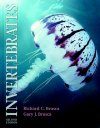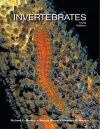Textbook
Out of Print
By: Richard C Brusca(Author), Gary J Brusca(Author)
936 pages, Col photos, b/w photos, illus
![Invertebrates Invertebrates]()
Click to have a closer look
About this book
Contents
Biography
Related titles
Recommended titles
About this book
Invertebrates, Second Edition presents a modern survey of the 34 animal phyla (plus the Protista) and serves as both a college course text and a reference on invertebrate biology. Thorough and up-to-date, it is organized around the themes of bauplans (body plans) and evolution (phylogenetics). Each phylum is organized in a standardized fashion, treating the systematics, bauplan (support and movement, feeding and digestion, circulation and gas exchange, excretion and osmoregulation, nervous system, reproduction and development), and phylogeny. Detailed classifications, phylogenetic trees, and references for all phyla are provided. Tables summarize each phylum's defining attributes. The text is accompanied by an abundance of detailed line drawings and – new to this edition – color photographs.
Other key changes from the First Edition (1990) include:
- the incorporation of new developments in phylogenetics, developmental biology, and molecular genetics
- major changes at the highest levels among the invertebrates. Three phyla that appeared in the original book – Pentastomida, Pogonophora, and Vestimentifera – no longer exist, and a new phylum, Cycliophora, has been erected. Moreover, this edition discusses recent work in molecular systematics that has shaken classic views on animal classification.
– a large new section on "Kingdom Protista" (replacing "Protozoa") containing new contemporary views of these organisms (arranged in 18 phyla).
Contents
INTRODUCTION - CLASSIFICATION, SYSTEMATICS, PHYLOGENY - ANIMAL ARCHITECTURE AND THE BAUPLAN CONCEPT - ANIMAL DEVELOPMENT, LIFE HISTORIES, AND ORIGINS - THE PROTISTA - PHYLUM PORIFERA: THE SPONGES - FOUR PHYLA OF UNCERTAIN AFFINITY - PHYLUM CNIDARIA - PHYLUM CTENOPHORA: THE COMB JELLIES - PHYLUM PLATYHELMINTHES - PHYLUM NEMERTEA: THE RIBBON WORMS - BLASTOCOELOMATES AND OTHER PHYLA - PHYLUM ANNELIDA: THE SEGMENTED WORMS - SIPUNCULA AND ECHIURA - THE EMERGENCE OF THE ARTHROPODS: ONYCHOPHORANS, TARDIGRADES, AND THE ARTHROPOD BAUPLAN - PHYLUM ARTHROPODA: THE CRUSTACEA - PHYLUM ARTHROPODA: THE HEXAPODA (INSECTS AND THEIR KIN) - PHYLUM ARTHROPODA: THE MYRIAPODA (CENTIPEDES AND THEIR KIN) - PHYLUM ARTHROPODA: THE CHELICERATES (SPIDERS AND THEIR KIN) - PHYLUM MOLLUSCA - THE LOPHOPHORATE PHYLA - PHYLUM ECHINODERMATA - OTHER DEUTEROSTOMES: CHAETOGNATHA, HEMICHORDATA, CHORDATA - PERSPECTIVES ON INVERTEBRATE PHYLOGENY
Customer Reviews
Biography
Richard C. Brusca is Director of Conservation and Research at the Arizona-Sonora Desert Museum, and also holds adjunct research positions at the University of Arizona and CIAD (Centro de Investigacion en Alimentacion y Desarrollo), Mexico. Dr. Brusca is a widely recognized invertebrate zoologist, marine biologist, and Sea of Cortez and Sonoran Desert naturalist.
The late Gary J. Brusca was Professor Emeritus at Humboldt State University. For 35 years he focused his research on the ecology and systematics of hyperiid amphipods, also writing on a variety of other subjects in journals and textbooks.
Textbook
Out of Print
By: Richard C Brusca(Author), Gary J Brusca(Author)
936 pages, Col photos, b/w photos, illus
"[...] superbly illustrated with a wealth of original drawings [...] As a reference volume covering invertebrate systematics, it is extremely useful and provides more detail than any comparable modern text."
– Times Higher Education Supplement
"Richard Brusca is applauded for completing this thoroughly revised second edition of the Invertebrates. In terms of cost, completeness and scholarship, I find this text to be the best available."
– Peter W. Glynn, Bulletin of Marine Science
"The second edition of Invertebrates [...] combines old and new with great success and makes a strong and useful contribution to modern perspectives on the invertebrates. [...] this edition is strengthened by many attractive color photographs of diverse organisms or structures. [...] This book's strengths lie in its phylogenetic approach, description and illustration of structural anatomy, and discussion of organism traits. [...] I can highly [...] recommend this book to all biologists and students interested in a modern perspective on invertebrate structure and evolutionary relationships."
– Richard B. Emlet, Limnology and Oceanography Bulletin




































